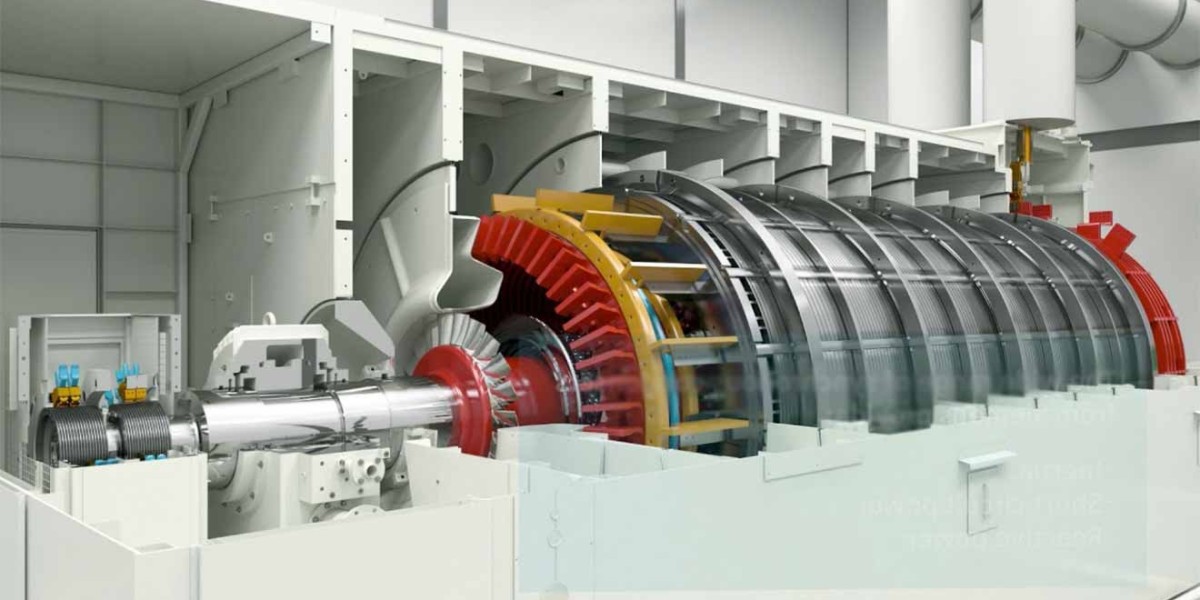The synchronous condensers market is gaining traction as an essential tool in these efforts, providing a reliable solution for voltage regulation, reactive power compensation, and power factor correction. This article explores key strategies that utility companies can adopt to optimize grid stability and improve power factor through the effective use of synchronous condensers.
1. Enhancing Grid Stability through Dynamic Reactive Power Compensation
One of the primary functions of synchronous condensers is to provide dynamic reactive power compensation, which helps stabilize voltage levels across the grid. Reactive power is essential for maintaining voltage stability, and fluctuations can lead to issues like voltage sag, spikes, or even blackouts, particularly in grids with a high share of intermittent renewable energy sources such as wind and solar.
Utility companies can leverage synchronous condensers to respond rapidly to fluctuations in reactive power demand. Unlike static devices such as capacitors or inductors, synchronous condensers offer a more flexible and responsive solution to reactive power compensation. By adjusting their output in real time, synchronous condensers can maintain steady voltage levels, preventing disruptions and ensuring a stable power supply. This is particularly important in regions with high renewable energy penetration, where power generation can vary throughout the day.
2. Power Factor Correction and Efficiency Improvements
Power factor correction is critical for improving the overall efficiency of an electrical system. A low power factor—often caused by inductive loads such as motors and transformers—can lead to energy losses, higher utility bills, and increased strain on grid infrastructure. Synchronous condensers can help improve the power factor by providing the necessary reactive power to offset the lagging effects of inductive loads, reducing the need for additional grid capacity.
By maintaining a high power factor, utility companies can optimize the flow of electricity, reducing losses in transmission and distribution. This leads to more efficient use of existing infrastructure, delaying the need for costly upgrades and reducing operational expenses. Furthermore, maintaining a high power factor also contributes to better grid stability, as the system is better equipped to handle load fluctuations without triggering voltage instability.
3. Integrating Synchronous Condensers with Energy Storage Systems
One of the most promising strategies for optimizing grid stability is the integration of synchronous condensers with energy storage systems. Energy storage, such as battery energy storage systems (BESS), is increasingly being deployed to balance intermittent renewable generation and stabilize the grid. When combined with synchronous condensers, these storage systems can provide both reactive power support and active power management, creating a more resilient and flexible grid.
Synchronous condensers offer rapid dynamic response, while energy storage systems can store excess energy during periods of low demand and discharge it during peak loads or when renewable generation is insufficient. This hybrid approach helps to address both short-term fluctuations in power supply and longer-term imbalances between supply and demand.
4. Implementing Predictive Maintenance for Increased Reliability
To maximize the effectiveness of synchronous condensers, utility companies can implement predictive maintenance strategies. With the help of digital sensors and advanced analytics, operators can monitor the performance of synchronous condensers in real time, detecting early signs of wear or malfunction before they result in equipment failure. Predictive maintenance reduces the risk of unexpected outages, enhances the longevity of equipment, and minimizes maintenance costs.
By adopting these predictive maintenance technologies, utility companies can ensure that synchronous condensers continue to operate at peak performance, delivering the stability and power factor correction needed to support grid operations.
5. Leveraging Advanced Control Systems for Optimal Performance
Modern synchronous condensers are equipped with advanced digital control systems, enabling real-time adjustments based on grid conditions. Utility companies can implement smart grid solutions that allow synchronous condensers to be controlled remotely and integrated with other grid management technologies, such as voltage regulators and load forecasting systems. These intelligent control systems allow for continuous optimization of reactive power generation, ensuring that the grid operates efficiently and that voltage levels remain stable even during periods of high demand or low renewable generation.
Conclusion
The synchronous condensers market presents valuable opportunities for utility companies to enhance grid stability, improve power quality, and increase operational efficiency. By strategically deploying synchronous condensers for dynamic reactive power compensation and power factor correction, utilities can address the challenges posed by renewable energy integration and the need for grid modernization. The combination of synchronous condensers with energy storage systems, predictive maintenance, and advanced digital controls offers a comprehensive approach to creating a more resilient, flexible, and efficient power grid, positioning utility companies to better meet the demands of the evolving energy landscape.



